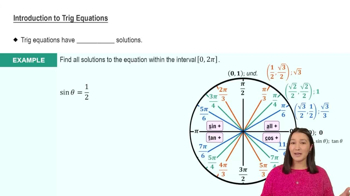Here are the essential concepts you must grasp in order to answer the question correctly.
Exponents
Exponents represent repeated multiplication of a number by itself. For example, in the expression 3⁴, the base 3 is multiplied by itself four times (3 × 3 × 3 × 3), resulting in 81. Understanding how to evaluate exponents is crucial for simplifying expressions that involve powers.
Recommended video:
Introduction to Inverse Trig Functions
Multiplication of Integers
Multiplication of integers involves combining whole numbers to find their product. In the expression -2 • 3⁴, the negative integer -2 is multiplied by the result of 3⁴. This concept is essential for correctly applying the rules of multiplication, especially when dealing with positive and negative numbers.
Recommended video:
Introduction to Trig Equations
Order of Operations
The order of operations is a set of rules that dictates the sequence in which mathematical operations should be performed to ensure consistent results. The acronym PEMDAS (Parentheses, Exponents, Multiplication and Division, Addition and Subtraction) helps remember this order. In evaluating -2 • 3⁴, one must first calculate the exponent before performing the multiplication.
Recommended video:
Algebraic Operations on Vectors
 Verified step by step guidance
Verified step by step guidance Verified Solution
Verified Solution



 7:48m
7:48m